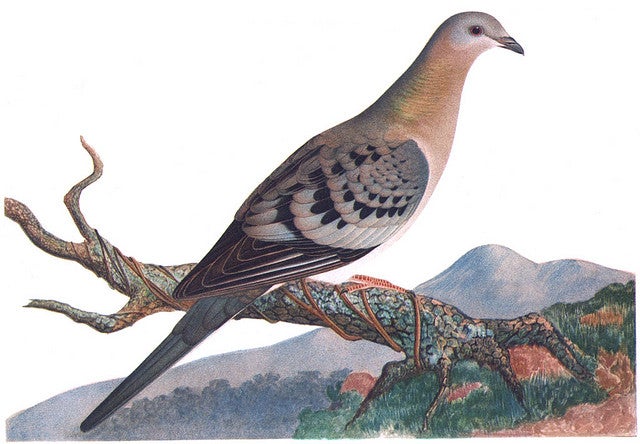The ESA: A Glimmer of Hope in the Face of an Extinction Crisis
The extinction of the passenger pigeon is a frightening example of what our future could hold if we don’t value our natural heritage by upholding the protections of the Endangered Species Act.

This page was published 10 years ago. Find the latest on Earthjustice’s work.
Last year marked the 100th anniversary of the passenger pigeon’s extinction. It’s unbelievable that a species whose flocks were once large enough to block the sun is now completely gone, but that is the reality of human impact on the natural world.
The extinction of the passenger pigeon is more than a sad story about a species of birds, however. It is also a frightening example of what our future could hold if we don’t value our natural heritage.
Several reports released over the last few months paint a grim picture of the world’s current extinction crisis. The Living Planet Report 2014, produced by the World Wildlife Fund, found that the world has lost half of its wildlife species in the last 40 years. Mammals, birds, reptiles, amphibians and fish have declined by 52 percent, and freshwater species have decreased by an alarming 76 percent.
Research published in the journal Nature also uncovered startling news on extinction, such as the finding that anywhere from 10 to 690 extinctions occur worldwide each week. In Biodiversity: Life – A Status Report, a compelling graphic illustrates both the world’s massive wildlife casualties and how little we actually know about the problem:
The situation only looks grimmer when considering that scientists still don’t fully understand climate change’s impacts on ecosystems and on wildlife population.
This news is bleak for both wildlife enthusiasts and the health of our planet. However, there is hope here in the U.S. thanks to the Endangered Species Act (ESA). Passed in 1973, this landmark bipartisan legislation has protected America’s biodiversity for more than 40 years. If the ESA existed in the time of the passenger pigeon, it may have even provided the safety net that the species desperately needed before its numbers plummeted. Due in large part to its effectiveness, the ESA has been the focus of many attacks from industry and lawmakers, who believe the law hurts their bottom line. However, conserving ecosystems, and the species that contribute to their functioning, makes good economic sense. Ecosystems provide services that sustain societies, and they are also necessary for thriving wildlife-related recreational activities—such as hunting, fishing, and wildlife watching—which the U.S. Fish and Wildlife Service says adds billions of dollars to the economy each year.
The ESA also receives overwhelming public support, which is more important than ever as species across the globe face increased survival challenges due to habitat degradation and loss, the impacts of climate change and other factors. The ESA provides commonsense, balanced solutions for conservation and development, allowing people to prosper while also protecting our natural heritage.
Established in 1989, Earthjustice's Policy & Legislation team works with champions in Congress to craft legislation that supports and extends our legal gains.
Earthjustice’s Washington, D.C., office works at the federal level to prevent air and water pollution, combat climate change, and protect natural areas. We also work with communities in the Mid-Atlantic region and elsewhere to address severe local environmental health problems, including exposures to dangerous air contaminants in toxic hot spots, sewage backups and overflows, chemical disasters, and contamination of drinking water. The D.C. office has been in operation since 1978.